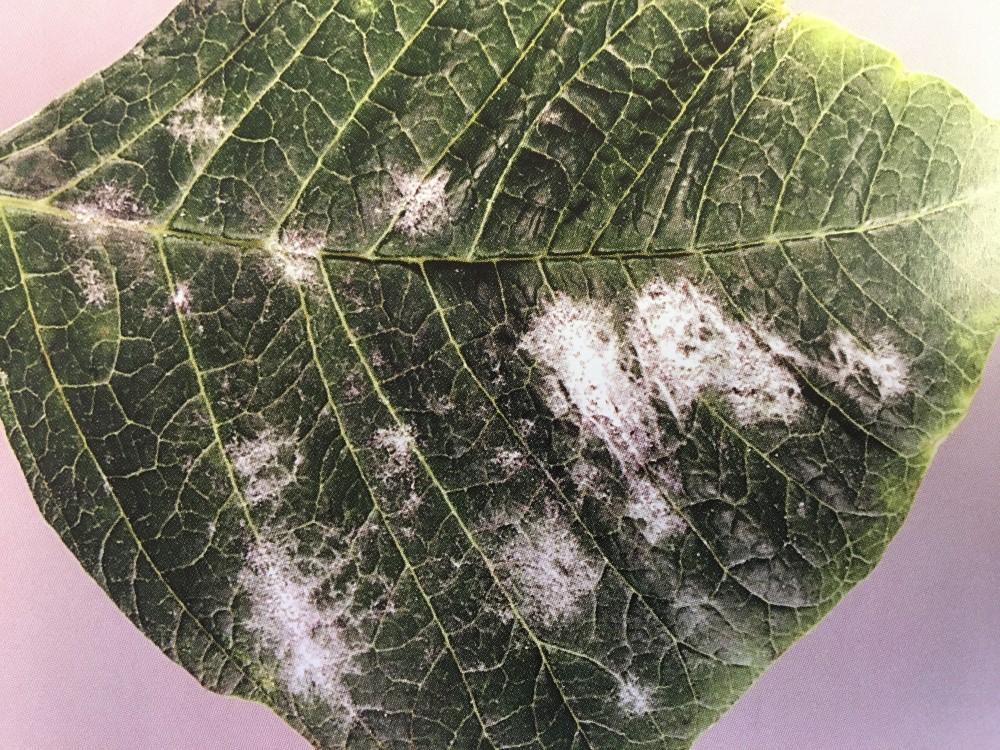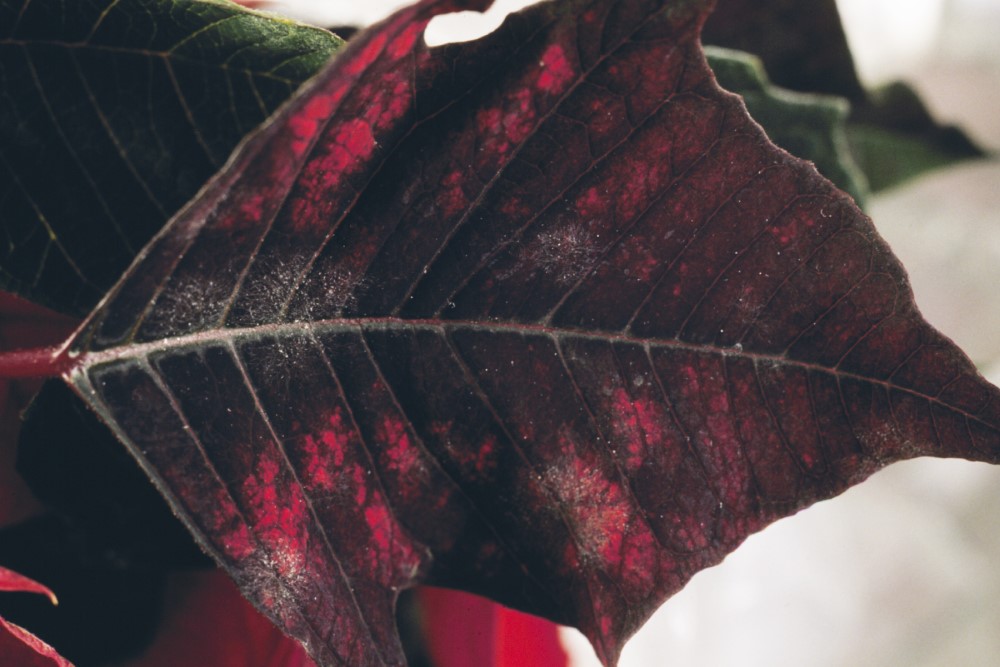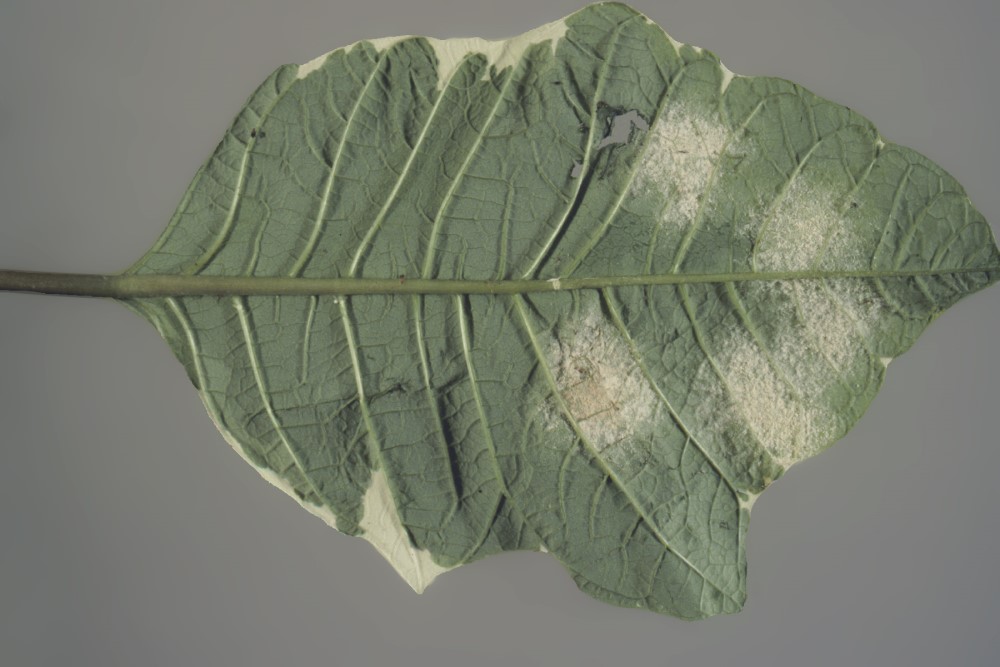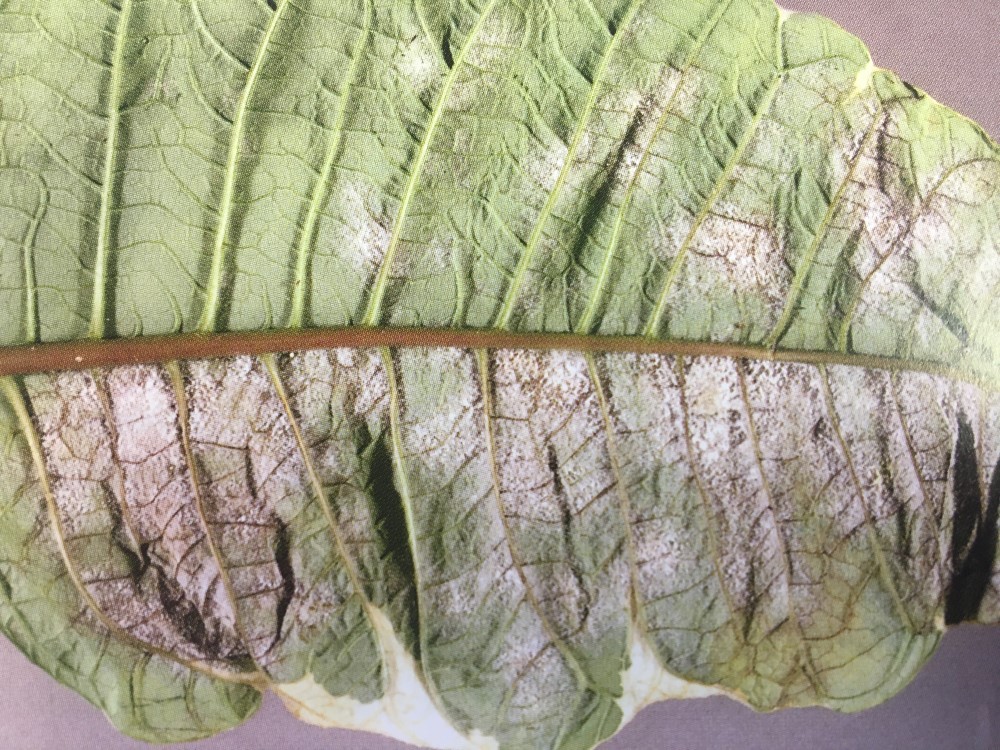Please click here to access the main AHDB website and other sectors.
- Home
- Knowledge library
- Powdery mildews on poinsettia: biology, symptoms, sources and spread
Powdery mildews on poinsettia: biology, symptoms, sources and spread
Learn more about the pathogens responsible for the various powdery mildews of poinsettia, disease symptoms and optimal conditions for infection to occur.
Back to: Powdery mildew diseases of poinsettia
Poinsettia powdery mildew diseases
Four pathogens belonging to the family Erysiphaceae have been found to infect poinsettia crops in the UK due to the worldwide propagation of the crop. Powdery mildew outbreaks have not been recorded recently on poinsettia in the UK. However, introductions can occur and must be managed. These diseases can render large proportions of crops unmarketable if left unchecked.
The four pathogen species responsible for powdery mildew disease on poinsettia include:
- American poinsettia powdery mildew, Erysiphe euphorbiicola
- Eurasian poinsettia powdery mildew, Podosphaera euphorbiae
- Mediterranean poinsettia powdery mildew, Leveillula taurica
- African poinsettia powdery mildew, Leveillula clavata
E. euphorbiicola (American powdery mildew) has been the most prevalent and damaging species. In terms of quarantine status, all four powdery mildew diseases were previously notifiable. The African powdery mildew remains notifiable. Statutory action is no longer taken against the Mediterranean powdery mildew. The status of both the American and Eurasian powdery mildews is currently under review by APHA/PHSI to determine if industry self-management of both diseases is sufficient.
Symptoms of the powdery mildew diseases on poinsettia
Understanding the different symptoms of powdery mildew disease on poinsettia can help identify the pathogen species responsible.
A discrete white powdery spotting on both the upper and lower leaf surfaces is the first symptom to develop in most affected crops. It can be difficult to see as it initially occurs on the lower leaf surface, on leaves near the base of the plant. Bracts, petioles and stems can also be affected.
Spots of fungal growth up to 10 mm in diameter develop, with feathery edges and a powdery appearance. Spots spread and coalesce until the whole leaf surface becomes covered with powdery white growth. Over time, severely affected leaves become twisted, turn yellow and fall prematurely. In some instances (possibly at lower humidities), the disease will appear as a chlorotic spot on the upper leaf surface with mildew growth on the corresponding lower surface.
American powdery mildew – bright white sporulation can occur on the upper and lower leaf surface; spread can be severe

Image © Fera.
Initial symptoms are similar in appearance to American powdery mildew, occurring as white powdery spots which may affect both upper and lower leaf surfaces. Typically, the fungal growth is sparser and harder to observe than the American powdery mildew. With time, it may develop a felty, pale brown appearance due to the production of secondary, persistent fungal strands.
Eurasian powdery mildew – sporulation occurs on both leaf surfaces

Image © Fera.
This is common in southern Europe, where it affects a wide range of crops. In the UK, it occasionally occurs on sweet pepper (Capsicum species). Infection of poinsettia results in small yellow spots, usually with a smooth edge, developing on the upper leaf surface, while a sparse white fungal growth develops on the corresponding lower surface. These symptoms more closely resemble those of downy mildew than typical powdery mildew.
Mediterranean powdery mildew – chlorotic areas on the upper leaf surface; sporulation occurs on the lower surface

Image © Fera.
This has rarely been intercepted in the UK. Superficially, it appears almost identical to Mediterranean powdery mildew, producing small yellow spots on the upper leaf surface. However, there is a dense fungal growth on the underside, similar to that of downy mildew. The white growth may develop a red hue as the disease progresses.
African powdery mildew – fungal growth is restricted to the lower leaf surface and superficially appears similar to a downy mildew

Image © Fera.
Sources, spread and conditions favouring disease development
Understanding the sources and mechanisms for powdery mildew spread is critical to managing this disease effectively.
When is powdery mildew seen?
The occurrence of American powdery mildew in UK crops is likely to be from imported, symptomless plants carrying a latent infection. This is supported by observations from the USA that infected poinsettias may not exhibit symptoms until after leaving the production glasshouse. In Europe, symptoms are thought to develop after a latent period of up to six months. Once infected, plants may become asymptomatic during warm conditions in summer, and so plant movement within and between nurseries can unknowingly spread the disease.
In the UK, powdery mildew symptoms are often not detected until quite late in the season (October/November), when symptoms, including bract infection, can develop dramatically and make plants unmarketable. Once spores are produced, they can be blown or carried by contact to new host plants.
How does it spread?
Disease establishment and spread are rapid under favourable environmental conditions. Spores produced abundantly on white mildew spots readily detach when mature. Studies in USA glasshouses identified daily spore production peaks between 10:00am and 2:00pm during the day, as spores produced at night matured on exposure to light.
Spores spread on air currents or can be carried on clothes and equipment, assisting spread within and between nurseries.
What conditions favour disease development?
At 20°C, spores germinate and establish infections within 48 hours, with visible symptoms developing after 9 to 14 days. This short infection cycle means epidemics can quickly develop in nurseries. Disease progress is considerably slower at 15°C than at 20°C.
Powdery mildew symptoms are rarer in summer, as high temperatures (over 25°C) lead to spores shrivelling, thus preventing epidemics from developing. However, if the fungus becomes established within leaves, the disease may remain latent until cooler autumn conditions allow symptom development.
Humidity level affects both spore release and their infection of tissue. Rapid changes in humidity around plants lead to spore release, with release typically occurring within three hours of watering. Infection at 25°C requires an optimum humidity of 50 to 80% relative humidity. Powdery mildews are generally less dependent on high humidity for spore germination than other fungi, such as Botrytis. Free water on host tissue can inhibit infection.
Outbreak prevention
Early detection followed by prompt action is the basis of effective disease management.
Glasshouse hygiene
Use detergent to wash down the glasshouse structure and benches before bringing in plants. Follow with disinfectant where there is a perceived high risk of inoculum being present (for example, if powdery mildew was present on the nursery in the previous poinsettia crop).
Disease monitoring
Regular crop inspections are important throughout the production cycle. Plants should be examined on arrival and then weekly, especially fully expanded leaves in the lower portion of the plant. Pay particular attention to the leaf undersides. Examine at least 1 in 50 plants. All varieties appear to be susceptible, but the disease is more readily seen on dark green leaves. Where poinsettia powdery mildew has occurred on the nursery in a recent season carefully monitor plants grown in the same area. Liaise with your local APHA/Plant Health and Seeds Inspector if you know or suspect any powdery mildew is present on your poinsettia crop.
Alternative hosts
Although alternative hosts of American powdery mildew are not known, the fungus may occur on other species of Euphorbia. As a precaution, control non-crop Euphorbiaceae, such as spurges, annual mercury and dog`s mercury that are in and around glasshouses. Include any ornamental Euphorbia species grown on the nursery in weekly monitoring.
Mediterranean powdery mildew can also be found on Capsicum species.
Visitors
Restrict glasshouse entry to staff who are working in the crop and essential visitors. Erect warning signs to remind workers not to enter the crop if they have recently visited poinsettia crops at other nurseries. Provide disposable overalls and gloves and consider disinfectant boot dips to reduce infection risk further.
Preventative fungicide treatment
Powdery mildew infections on poinsettia have been associated with imported plants and have generally been confined to a few UK nurseries. As such, routine preventative fungicide treatment is difficult to justify. However, if the disease becomes more common in the UK, or if a certain batch or variety is perceived to pose an enhanced risk, consider applying a preventative fungicide treatment or other available systemic product (see Table 1 on the control strategies for powdery mildew page) which affords the possibility of eradicating latent infections.
Learn more about the control strategies for powdery mildew
Useful links
Read the Crop Walkers' Guide: Bedding & Pot Plants for more information on powdery mildew and other common diseases of ornamental plants.
Crop Walkers' Guide: Bedding & Pot Plants
Author(s) – Dave Kaye and Erika Wedgwood, ADAS Horticulture.
Original author – Tim O’Neill, ADAS Horticulture.
Webpage content correct as of March 2021.

